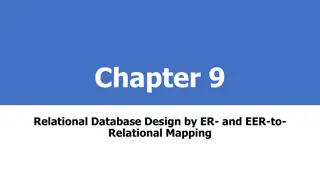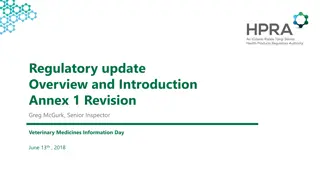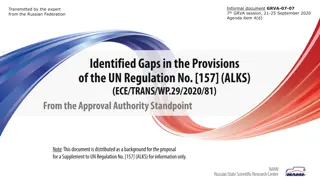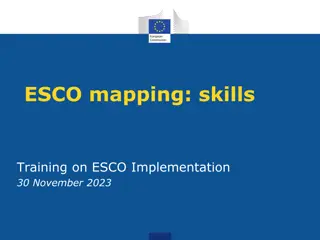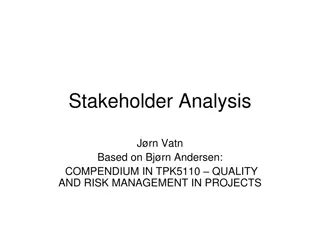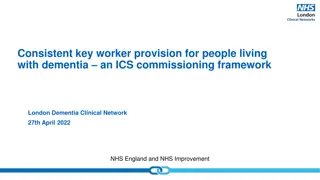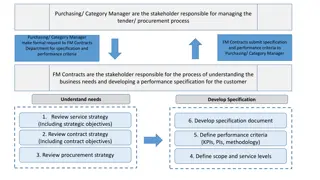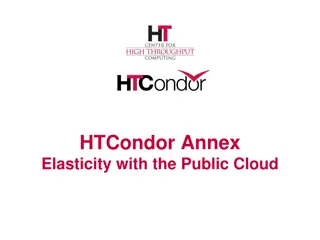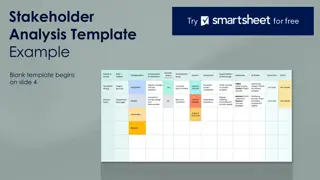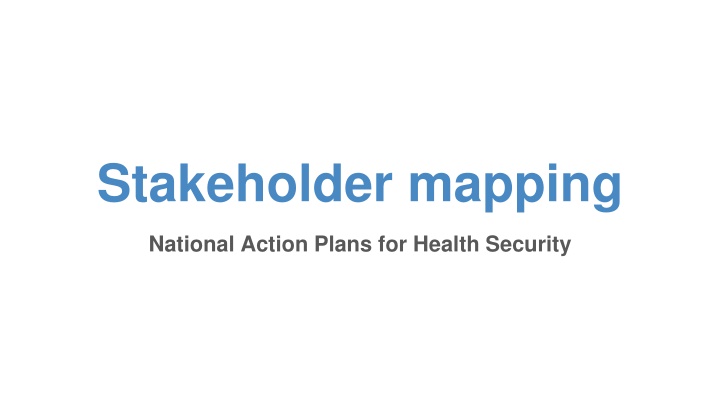
Essential Stakeholder Mapping for Effective Health Security Initiatives
Discover why stakeholder mapping is crucial for the success of national action plans for health security. Learn how to identify key stakeholders, engage them effectively, and make informed decisions based on stakeholder power and influence. Develop a clear plan for communication with technical leads and high-level decision makers to drive collaboration and ownership in the initiative.
Download Presentation

Please find below an Image/Link to download the presentation.
The content on the website is provided AS IS for your information and personal use only. It may not be sold, licensed, or shared on other websites without obtaining consent from the author. If you encounter any issues during the download, it is possible that the publisher has removed the file from their server.
You are allowed to download the files provided on this website for personal or commercial use, subject to the condition that they are used lawfully. All files are the property of their respective owners.
The content on the website is provided AS IS for your information and personal use only. It may not be sold, licensed, or shared on other websites without obtaining consent from the author.
E N D
Presentation Transcript
Stakeholder mapping National Action Plans for Health Security
Why is stakeholder mapping essential? The involvement of the right people at the right time is critical to the success of an initiative. Stakeholder mapping helps to identify: who the key stakeholders are their power and influence the most effective ways to engage them
1. Stakeholder identification NAPHS TECHNICAL LEADS HIGH-LEVEL DECISION MAKERS Consulted to ensure buy-in and ownership of the process COORDINATION TEAM Oversees and coordinates the NAPHS process and collaboration across relevant sectors and technical areas Comprised of operational technical leads (focal points) from each technical area and supports the NAPHS coordination team by providing technical and operational inputs
NAPHS coordination team Competency Institution Ministry, department or agency Individual nominee and job title Examples provided below IHR coordination Program management, leadership, communication and negotiation Monitoring and evaluation Epidemiology and surveillance Legal and policy advocacy Financing and resource mobilization
Technical leads Technical area Institution Ministry, department or agency Individual nominee and job title Contact details
High-level decision makers Technical area Institution Ministry, department or agency Individual nominee and job title Contact details
2. Stakeholder power map More power or influence KEEP SATISFIED Enter stakeholder MANAGE CLOSELY Enter stakeholder Strongly oppose your objective Strongly support your objective Enter objective MONITOR KEEP INFORMED Enter stakeholder Enter stakeholder Less power or influence
Next steps Develop a plan for communication with technical leads and high-level decision makers. Decide on the following: Who will contact which stakeholders? What method of communication will be used? What is the timeline for communication?



